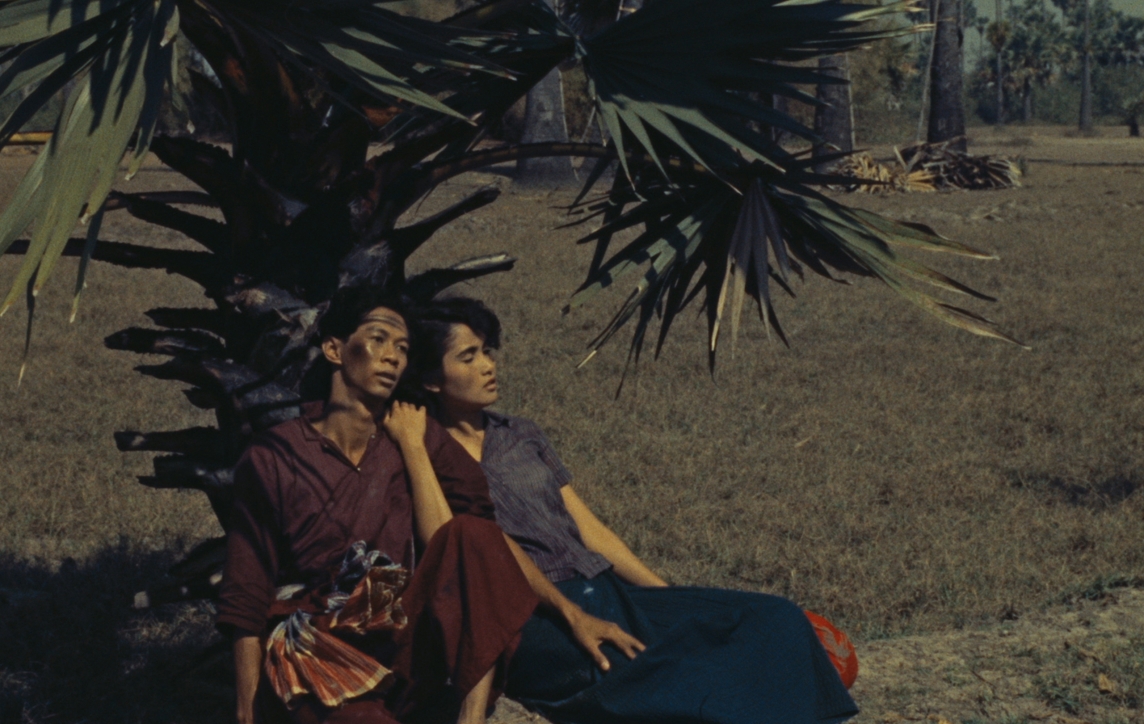Santi-Vina

‘Marut’ Thavi Na Bangchang
Thailand – 1954

Screenplay: Robert G. North, Thavi Na Bangchang, Vijit Kunavudhi
Cinematography: R.D. Pestonji
Production: Hanuman Film
Language: Thai
Duration: 117 min
Color: Color
Synopsis: Vina always comes to the defence of Santi, a poor blind boy who lives with his father. She protects him most often from the bully Krai. Santi’s father sends the boy to learn from Luang Ta, a revered monk, hoping that his son would regain his eyesight by following Buddha’s teachings. Years later, Santi and Vina meet again and fall in love. Krai, who also desires Vina’s attention, is jealous and asks his parents to arrange a marriage to Vina. When the young lovers decide to elope, they are caught and Santi is severely beaten. On Vina and Krai’s wedding day, a disaster forces the monk Luang Ta to give up his life to save Santi. Miraculously, Santi regains his eyesight giving him the chance to attempt to win Vina back, but he realizes that real happiness is not to be found in the dust of life but upon entering the land of the Buddha.
Notes:
Directed by Tawee Na Bangchang, aka Marut, Santi-Vina was the first Thai feature shot in color on 35mm film with sound, a project championed by producer and studio head Rattana Pestonji, who wanted to elevate Thai film standards at a time most were still shot on 16mm film. As a result, it became the first Thai film to win international recognition including best cinematography, best art direction and a special award for portraying Asian culture at the 1954 Southeast Asian Film Festival in Tokyo, as “the Feature Picture which will Best Disseminate Asian Culture and Increase Understanding of Asia by the West”. For a long time, the original materials of Santi-Vina were considered lost. There was only one 16mm print in inferior condition at the Thai Film Archive, but in 2014 the original negative was discovered at the BFI and the release prints were also found at the China Film Archive and at the Gosfilmofond.
Santi-Vina is a stock love-triangle story but fun to watch, especially for its surprisingly sarcastic dialogue. Weirdly dubbed scenes of the characters as children are bound to get some laughs. Culture and country lives are beautifully portrayed in the film. Simple yet spectacular scenes show students in a classroom; pretty paddy fields; and villagers celebrating the the Loi Krathong festival in song and dance. It also captures the structures of relationships in the community, and the rites of passage from birth to death that connect the community to Buddhism.
Notes from Ketbungkan, Kaewta. 2016. “Restored ‘Santi-Vina’ Offers Refreshing Window to ‘Thainess’ Past.” Khaosod English. July 27.


